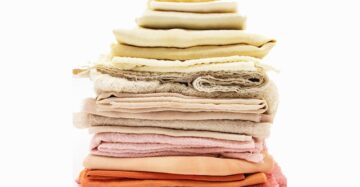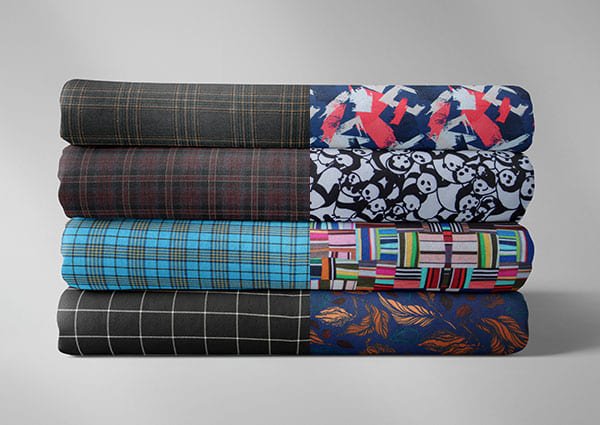What is Natural Fabric ?

In the fast-moving world, fashion dominates real life and the world. Lots of people love to wear ready-made clothes from famous clothing brands. Consumers are now prioritizing not only style and affordability but also the environmental impact of their clothing choices.
The most effective way to achieve a sustainable fashion future is by opting for natural fabrics. Natural Fabric is made from plants, animals, or minerals. Each type of fabric carries a unique property, benefits, and ideal uses, making them suitable for various applications.
Nowadays, the production of natural fiber involves a labor-intensive, multi-step process. Initially, it necessitates vast expanses of land for cultivating crops and raising animals, requiring the oversight of numerous farmers, breeders, and herders. The collected fibers, however, are far from ready for retail as pristine fabrics. They must undergo cleaning and bleaching processes.
Types of Fabric
Cotton: Cotton fabric is the most famous natural fabric made from the plant-based fiber available worldwide. It is derived from the cotton plant’s fluffy balls and is known for its breathability, comfort, and absorbency. Cotton is often used for everyday wear, including t-shirts, jeans, and underwear.
Silk: A protein-based fiber spun by the silkworm. It is strong, drapes well is breathable, hypoallergenic, and has a beautiful natural luster. Silk is produced by silkworms and is known for its luxurious feel and sheen. This natural protein fiber possesses hypoallergenic properties and effectively wicks moisture. Silk is often used for eveningwear and high-quality bedding.
Wool: Wool comes from the fleece of sheep or other animals like goats (cashmere and mohair) and rabbits (angora). Wool is renowned for its insulation properties, which make it an excellent choice for winter clothing. It is also naturally flame-resistant.
Bamboo: Fibres derived from the bamboo plant are gaining popularity due to their exceptional qualities. Known for being super soft and breathable, bamboo fibers provide a comfortable feel against the skin, making them ideal for clothing and home textiles.
Linen: Linen fabric is made from the fibers of the flax plant, linen has been used for thousands of years for clothing, bedding, and household goods. One of the key benefits of linen fabric is its moisture-wicking properties, making it an ideal choice for warm-weather clothing.
Benefits of Choosing
These natural fibers are transported to mills specialized in converting them into various types of yarn. Subsequently, this yarn is either knitted or woven to create the eventual fabric. They have some special features and properties.
Biodegradability: Natural Fabric is easily broken down naturally and returns to the earth, reducing landfill waste and pollution. Unlike synthetic fabrics, which take hundreds of years to decompose.
Breathability: One of the key advantages of natural fabrics is their breathability. These fabrics allow air to circulate freely, which helps regulate body temperature and reduce the risk of overheating. This makes them an ideal choice for hot and humid climates.
Skin-Friendly: It is very soft for the skin, making it suitable for individuals with sensitive skin or allergies. They give a comfortable feel to wearing and a classy look. Being free from chemicals and synthetic dyes, they are less likely to cause irritation or allergic reactions.
Chemical-Free: Natural fabrics are generally produced with fewer chemicals and synthetic additives compared to synthetic fabrics. This reduces the exposure to potentially harmful substances that can be absorbed through the skin.
Aesthetic Appeal: It gives an aesthetic look to the wearing and the natural luster and texture of many natural fabrics create unique, visually appealing products. Natural fabrics often have a tactile quality that enhances the overall aesthetic of garments.
Differentiation between Natural Fabric vs Synthetic Fabric
Natural fabric and synthetic fabric are different and they have also different purposes in textile and manufacturing, each with unique properties and applications.
Natural Fabric is easily broken down naturally and returns to the earth, reducing landfill waste and pollution. Unlike synthetic fabrics, which take hundreds of years to decompose. It is one of the key advantages of natural fabrics is their breathability. These fabrics allow air to circulate freely, which helps regulate body temperature and reduce the risk of overheating.
Synthetic fabric is man-made fabric and it is created through chemicals that take a long time to break down into the earth these fabrics include popular varieties such as polyester, nylon, and acrylic, which are engineered to enhance functionality and performance in a wide range of applications, from clothing to industrial textiles.


